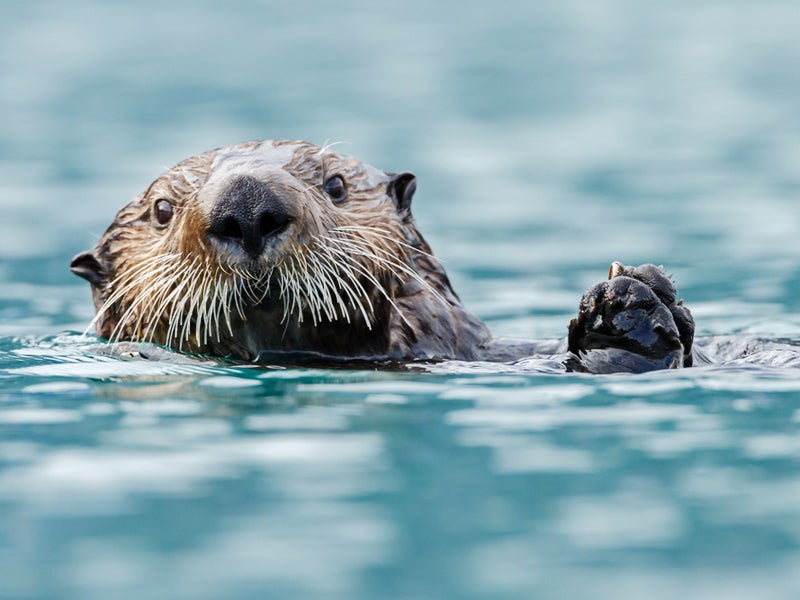Otter this World: Five Fantastic Otter Facts for Sea Otter Awareness Week
Otters are more than just furry faces—they also help keep coastal ecosystems alive.

This page was published 9 years ago. Find the latest on Earthjustice’s work.
Happy Sea Otter Awareness Week! As zoos and aquariums across the country educate the public about otter conservation, it’s important to remember that otters are an essential part of California’s coastal ecosystems, on top of being charismatic little mammals. Once numbering almost 16,000, the California sea otter’s three-year population average was just 2,792 in 2012. That’s why Earthjustice is fighting to restore otters to their historic range. We’re currently defending a 2015 court victory that protects California sea otters in order to give these ingenious marine mammals the chance they deserve.
Here are five facts you might not know about the famed sea otter:
1)
Sea otters are one of the few animals that use tools. If a tasty sea urchin or clam shell is too tough for their jaws, otters will use a stone to break open their meal and claim their prize. An otter will keep a particularly useful stone handy by carrying it around on its belly or in its underarm pouches—pockets of loose skin under each foreleg for storing tools or holding prey foraged from the ocean floor.
2)
Otters don’t have a layer of blubber, unlike other marine mammals. Instead they rely on two layers of dense fur to protect them from frigid water. The under layer can have as many as 1 million hairs per square inch—the densest coat of any mammal. For a little perspective, humans only have about 100,000 hairs on our entire heads. The top layer of otter fur consists of long, waterproof hairs, and otters secrete natural oil to enhance the water-repellent quality of this fur. However, without blubber otters are extra sensitive to oil spills because the slick substance causes their fur to mat and lose its heat-conserving properties, resulting in hypothermia or even death.
3)
Adult sea otters eat 25 percent or more of their body weight every day. That’s more than 12 pounds of seafood a day! If humans ate like otters do, we’d need to consume around 37 pounds food per day. Otters mostly eat crustaceans and creatures like squid and octopus.
4)
Sea otters are a keystone species—a linchpin of California and Pacific Northwest ocean ecosystems. When otters feed on shellfish, particularly sea urchins, they control the population of these species. Otherwise, urchins would consume all of the coastal habitat’s kelp, or giant seaweed. Kelp is a major source of food and shelter for other organisms. Certain crabs and abalone depend on kelp for food, while many types of fish use the huge kelp forests to hide from predators. Sea lions and seals feed on the fish that live in kelp forests, and grey whales have even been observed in these kelp havens, most likely hiding from predatory killer whales. Without sea otters to keep urchins in check, the entire ecosystem could collapse.
The Sea Otter Underwater Landscape from Hakai on Vimeo.
5)
Otters also help keep our oceans squeaky clean. Their hankering for crabs keeps the population of these crustaceans in check, protecting algae-eaters like orange sea slugs and isopods, which crabs love to eat. Sea slugs feed on the algae growing on sea grasses, keeping these essential plants clean and healthy. Tiny isopods called Idotea are also important algae grazers that sea otters protect. Seagrass habitat is crucial for many marine species; for instance, fish and crabs use it as a nursery. But most importantly, sea grass acts as a carbon sink, meaning that it absorbs carbon dioxide from the atmosphere. So when otters feast on tasty crustaceans, they are actually helping to prevent global warming.
The California Regional Office fights for the rights of all to a healthy environment regardless of where in the state they live; we fight to protect the magnificent natural spaces and wildlife found in California; and we fight to transition California to a zero-emissions future where cars, trucks, buildings, and power plants run on clean energy, not fossil fuels.